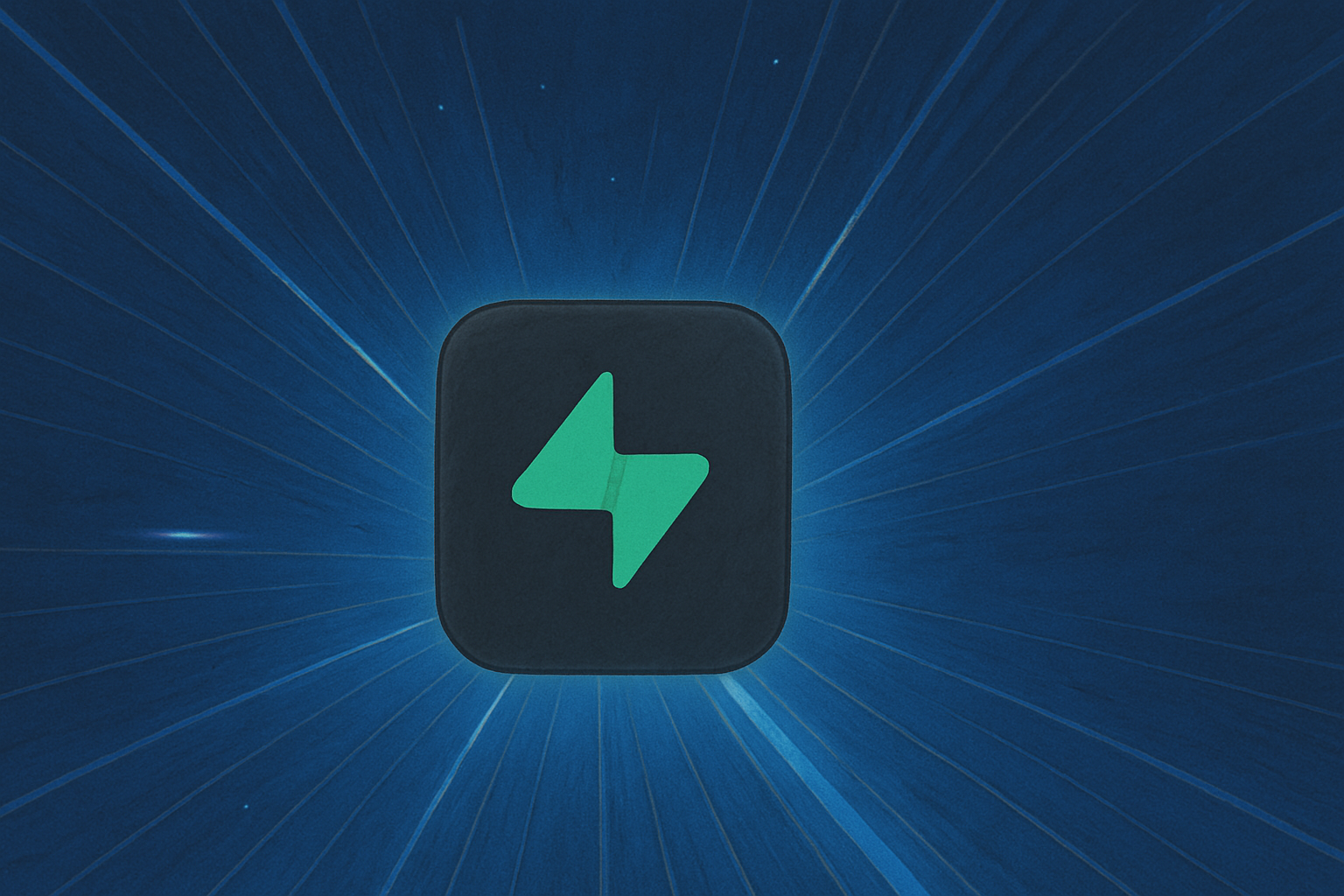Let's talk about how AI is changing the world of recruiting. From smart voice assistants that can actually interview candidates to powerful matching algorithms, AI is not about replacing us recruiters, but about making us super-powered versions of ourselves. Ready to dive in and see how you can start using AI to make your job easier and more effective?
Why AI in Recruiting?
So, why should you even care about AI in recruiting? Well, let me break it down for you:
- Time Efficiency: AI can handle all those repetitive tasks that drive you nuts, freeing you up to focus on the fun stuff. Think automated scheduling, initial screenings, and even voice-powered interviews!
- Better Candidate Matching: Those AI algorithms? They're like super-smart matchmakers, finding the best candidates for your roles.
- Enhanced Candidate Experience: With AI, you can respond to candidates faster and make their experience smoother. Voice AI even lets them schedule interviews through natural conversation!
- Data-Driven Decisions: AI gives you all the data you need to make smarter hiring choices.
Getting Started with AI in Recruiting
Resume Screening and Candidate Matching
Let's start with the basics: resume screening. AI can be a game-changer here. Check out these tools:
- Eightfold.ai: It uses deep learning to match candidates with roles based on their potential. Pretty cool, right?
- Skillate: This one parses and ranks resumes using AI. It's like having a super-smart assistant.
- Manatal: Perfect for smaller teams, it provides AI matching with an easy-to-use interface starting at just $15/month!
Here's how to make the most of it:
- Start with crystal-clear job descriptions. The more specific, the better AI can match.
- Use standardized templates for your job postings. Consistency is key!
- Keep your requirements up-to-date. The more current, the more accurate the matches.
Candidate Communication and Engagement
Now, let's talk about how AI can help you engage with candidates better:
- Paradox (Olivia): This AI assistant can handle screening and scheduling like a pro.
- HireVue: It combines video interviewing with AI analysis. It's like having a second set of eyes.
- Teamtailor: Smart scheduling and AI-powered communication? Yes, please!
Here are some tips to make it work for you:
- Set up automated responses for those common questions you get all the time.
- Let AI handle interview scheduling and follow-ups. It's a time-saver!
- Put chatbots on your careers page to help candidates 24/7.
- But remember, keep that human touch for the important stuff. AI is great, but it's not everything.
Writing Better Job Descriptions
AI can even help you write better job postings. Check these out:
- Textio Loop: It analyzes and improves your job descriptions to make them more engaging.
- hireEZ: This one helps you craft job postings that attract the right candidates.
- GPT-powered tools: They can refine and optimize your job descriptions like magic.
Here's how to use them effectively:
- Use AI to analyze your successful past job postings. Learn from what works!
- Check for inclusive language. You want to attract a wide range of candidates.
- Optimize for both humans and ATS systems. You want to reach everyone!
- Try A/B testing different versions of your job descriptions. See what resonates.
Sourcing and Outreach
AI can revolutionize how you find and approach candidates:
- hireEZ AI Sourcing Hub: It uses AI to source candidates across multiple platforms. It's like having a super-powered search engine.
- Manatal: This one centralizes candidate sourcing from over 2,500 channels. Talk about comprehensive!
- LinkedIn Recruiter: It uses AI to suggest relevant candidates. It's like having a personal recruiter assistant.
Here's how to make the most of it:
- Set up automated talent pools. It's like having a constant stream of potential candidates.
- Use AI to identify those passive candidates who might not be actively looking.
- Implement predictive analytics to target your outreach better. It's like having a crystal ball!
- Automate your initial outreach, but personalize those key messages. It's all about balance.
Advanced AI Applications in Recruiting
1. Voice AI Assistants - The New Game Changer
Hey, want to hear about something really cool? Voice AI is absolutely transforming how we handle interviews and candidate screening. Let me show you what's possible:
What Can Voice AI Do?
- Smart Interviewing: These AI assistants can actually conduct initial screening interviews! They ask questions, analyze responses in real-time, and even provide instant feedback. Pretty wild, right?
- Super-Smooth Scheduling: Forget the endless email chains. Voice AI can chat with candidates to find the perfect interview time, checking everyone's calendars automatically.
- Quick Candidate Screening: It can collect all the basic qualifying info through natural conversation, making the process way more engaging for candidates.
Real Examples in Action
Remember how painful scheduling used to be? Well, check this out:
- Carv is using voice AI to automate their whole interview process. They've cut their time-to-hire dramatically, and candidates love getting instant feedback.
- AMS Voice AI tried voice AI for screening, and guess what? Over 72% of candidates said they'd be happy to use it again. That's huge!
Pro Tips for Using Voice AI
- Start with simple stuff like scheduling and basic screening
- Use it for initial interviews, but keep the human touch for final rounds
- Make sure to tell candidates when they're talking to AI (transparency is key!)
- Have a backup plan for when the tech hits a snag (because it happens!)
2. Predictive Analytics
AI can help you forecast all sorts of things:
- Future hiring needs? Check!
- Candidate success likelihood? You got it!
- Time-to-hire metrics? No problem!
- Market trends and salary benchmarks? AI's got your back!
3. Interview Analysis
AI can even help during the interview process:
- It can analyze video interviews for those soft skills that are hard to quantify.
- It can provide structured interview questions to keep things consistent.
- It can assess candidate responses to give you more insights.
- It can help identify potential culture fit. It's like having a sixth sense!
Implementation Roadmap
Here's a simple roadmap to get you started:
Phase 1: Foundation (1-2 Months)
- Take a good look at your current recruitment process. Where can AI help?
- Pick one or two AI tools to start with. Don't overwhelm yourself!
- Train your team on the new tools. Make sure everyone's on board.
- Set up some basic metrics to track your progress.
Phase 2: Integration (2-3 Months)
- Start using AI for resume screening. It's a great place to begin!
- Set up automated communication flows. Let AI handle the basics.
- Begin using AI to optimize your job descriptions. See what works!
- Start collecting data for analytics. You'll need it later!
Phase 3: Advanced Features (3-6 Months)
- Implement predictive analytics. Start forecasting your hiring needs.
- Add video interview analysis. Get more insights from your interviews.
- Develop custom AI workflows. Tailor AI to your specific needs.
- Optimize based on the data you've collected. Keep improving!
Best Practices and Tips
Here are some tips to help you get the most out of AI in recruiting:
1. Start Small
- Begin with one or two AI tools. Don't try to do everything at once!
- Focus on high-impact, low-risk areas. Start where you'll see the biggest gains.
- Measure your results before expanding. See what's working and what's not.
2. Maintain Human Oversight
- Use AI as a tool, not a replacement. It's there to help you, not do your job.
- Review AI recommendations. Don't just take them at face value.
- Keep human interaction for those crucial touchpoints. AI can't replace that personal touch.
3. Ensure Data Quality
- Clean up your existing recruitment data. Garbage in, garbage out!
- Standardize your data collection. Consistency is key.
- Regularly audit AI decisions. Make sure it's working as intended.
4. Focus on Candidate Experience
- Balance automation with a personal touch. Don't let AI make your process feel cold.
- Be transparent about your AI use. Candidates appreciate honesty.
- Provide human fallback options. Sometimes, candidates need to talk to a real person.
Common Pitfalls to Avoid
Watch out for these common mistakes:
- Over-automation: Don't automate everything just because you can. Keep the human element!
- Tool Overload: Don't try to implement too many tools at once. Start small and build from there.
- Neglecting Training: Make sure your team is properly trained on the new tools. Don't leave them in the dark!
Measuring Success
Keep an eye on these key metrics to see how AI is impacting your recruiting:
- Time-to-hire reduction: Are you filling roles faster?
- Cost-per-hire changes: Is AI helping you save money?
- Quality of hire improvements: Are you bringing in better candidates?
- Candidate satisfaction scores: Are candidates happier with your process?
- Team productivity gains: Is your team getting more done?
Future Trends
Keep an eye on these emerging trends in AI recruiting:
- Multimodal AI: Combining text, video, and voice analysis for a more comprehensive view of candidates.
- Autonomous Scheduling: More sophisticated interview coordination to streamline your process.
- Predictive Success Models: Better matching of candidates to roles based on data-driven predictions.
- Enhanced Candidate Experience: More personalized interactions to make candidates feel valued.
Conclusion
So, there you have it, my friend! AI in recruiting isn't about replacing us – it's about making us better at what we do. By starting small and gradually adding more AI tools, you can transform your recruitment process while still keeping that human touch that's so important.
Remember, the goal is to let AI handle the repetitive stuff and give you data-driven insights. That way, you can focus on building relationships and making those strategic decisions that really matter. Start small, see what works, and keep expanding your AI toolkit as you get more comfortable with the technology.
Additional Resources
Want to learn more? Check out these resources:
So, what do you think? Ready to start your AI-enhanced recruiting journey? Let me know if you have any questions or need help getting started. I'm here for you!



